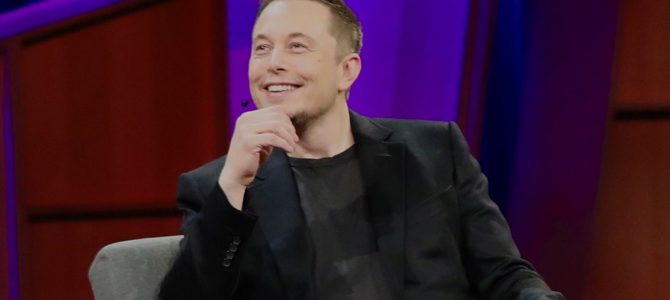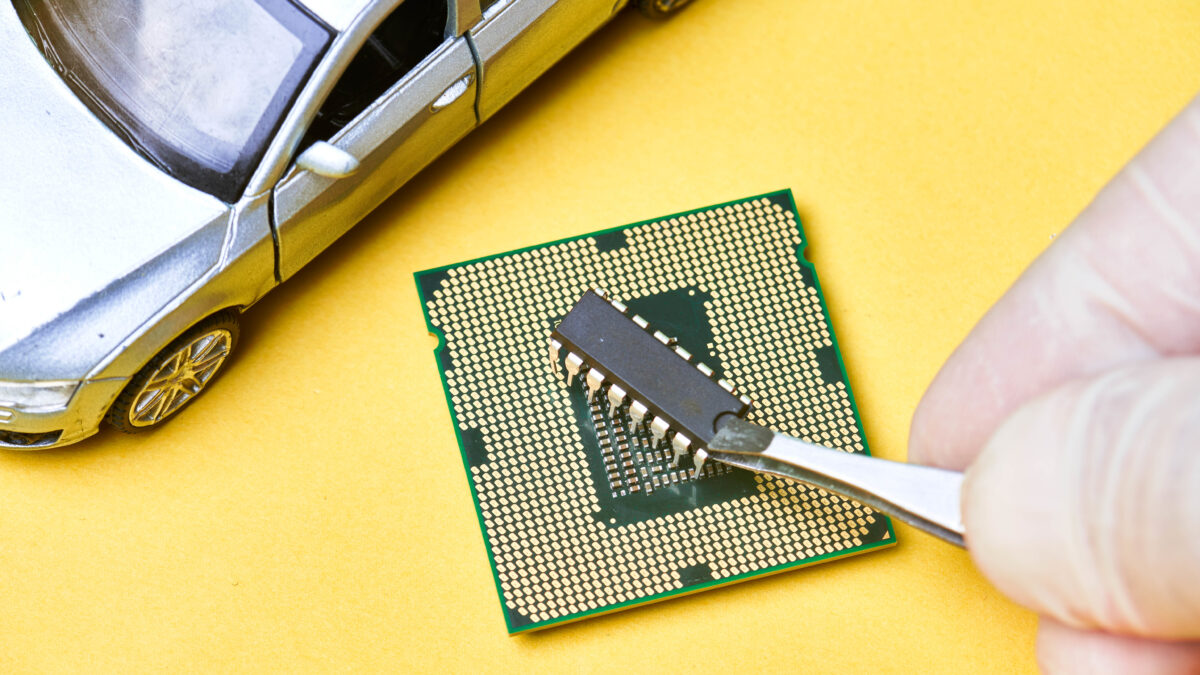
Elon Musk may finally be running out of other people’s money. That’s the upshot of a report on how Tesla is burning so much cash it may run out by the end of the year. This is a company that has raised more than $5 billion from its investors so far, and it is still going to need many billions more—if it can get them. What is more interesting is how Tesla got to the point where it is still bleeding cash, just when it was finally supposed to be making good on its extravagant promises.
The company has always been a triumph of PR hype and political messaging over reality. Why invest in Tesla? Why buy a Tesla? Because you’re not just buying a car—you’re participating in a social and technological revolution. You are the leading edge of the new era of electric cars and the obsolescence of the gasoline engine—which will literally save the planet, or so the story goes.
But it’s not just about global warming. You’re also helping Elon Musk revolutionize the entire manufacturing process by building super-automated, hyper-roboticized factories. He’s on the leading edge of the self-driving car revolution, already introducing a feature he calls “Autopilot.” If we don’t manage to save this planet, don’t worry. By boosting Musk, you’re helping him find us another planet to colonize.
In actuality, what has Tesla produced? A very nice car—for $100,000. There are a lot of very nice cars you can buy for $100,000, if you’re the sort of person who thinks this is a reasonable amount of money to spend on a car, as opposed to a house. More to the point, there are a lot of very nice cars you can buy for $50,000. But Tesla has been able to charge an irrationally high premium for sleek design, technological glamour, and what a Tesla-owning friend of mine describes as “happy tree-hugger feelings.”
Tesla’s next step is supposed to be the production of its first mass-market electric car for the middle class, the Model 3. They were supposed to pump out 500,000 Model 3s this year, but the company has been unable to produce them at anywhere near that rate. In fact, the company’s one big auto factory was recently closed down for a week.
“In a Tuesday note to employees, CEO Elon Musk said that the pause was necessary to lay the groundwork for higher production levels in the coming weeks. Musk said he wants all parts of the company ready to prepare 6,000 Model 3 cars per week by the end of June, triple the rate Tesla has achieved in the recent weeks.” Let me do the math for you, because Musk regularly relies on the fact that you won’t. The company was supposed to build 500,000 Model 3s this year. It has been producing them at a rate of 100,000 per year, but Musk really, really promises they will ramp that up soon to a rate of 300,000 per year.
More important, even these smaller production targets are being achieved in exactly the opposite of the way Musk promised. MIT Technology Review summed up the vision in 2016.
Musk has previously declared his intent to ‘build a machine that builds the machine,’ a highly automated vehicle factory that will stun conventional automotive manufacturers, one in which human workers will all but vanish, replaced by highly automated software-directed machinery and robots that will build Model 3s, and perhaps other Tesla models, at speeds greater than any accomplished in assembly plants operated by General Motors, Ford, Toyota, or any other global automaker. During the company’s second-quarter earnings call with financial analysts, Musk nicknamed his proposed factory ‘alien dreadnought’—a Star Wars battle cruiser from another galaxy. ‘The point at which that’s what the factory looks like, that’s when you know you’ve won,’ Musk said this summer.
Now here’s the reality: “‘Excessive automation at Tesla was a mistake,’ Musk tweeted recently. ‘To be precise, my mistake. Humans are underrated.’ ‘We had this crazy, complex network of conveyor belts,’ Musk told CBS News. ‘And it was not working, so we got rid of that whole thing.'”
Tesla’s auto factory, where human workers were going to “all but vanish,” now employs up to 10,000 workers. By comparison, back in 1997 when the same factory was run by a Toyota/GM joint venture, it employed about half as many people to produce more than 350,000 cars. Tesla’s hyper-futuristic production process turns out to be less than half as efficient as a standard automobile plant 20 years ago.
That brings us back to the story about Tesla burning through its cash, because the main reason is the failure of its automated production dreams.
While Musk’s vision for the future once called for extreme automation, the present day is all about manpower. Back in 2010, Tesla had just 899 employees. Today, the company has nearly 40,000 workers….
Tesla has added employees faster than it has boosted revenue in three of the last four years. This includes more than doubling the workforce in 2017, when the company was scaling up for Model 3 production and took on employees from SolarCity Corp.
Tesla’s employee roster more than tripled from 2014 to 2017, and revenue per employee stagnated. General Motors Co. and Ford Motor Co. each bring in about 2.5 times as much revenue per employee.
But wait, there’s more. Tesla is facing a wall at the end of this year, when the $7,500 federal tax credit for its electric vehicles expires. The idea behind the tax credit was to stimulate the production of electric vehicles in their early stages until they became profitable and economically self-sustaining. But Tesla still hasn’t reached that point and is not likely to do so.
At the same time Tesla’s credits expire, many traditional automakers will be bringing to market their own electric vehicles, which still qualify for the credits. More important, these cars serve a larger economic purpose for the big automakers: they help the companies meet federal fuel-efficiency regulations. Since automakers are judged on the gas mileage of the entire fleet of cars they offer, they have an incentive to lose money on the sale of electric vehicles, which use no gasoline, to be allowed to sell the gasoline-powered cars that actually drive their profits. In effect, the $7,500 federal tax credit for electric vehicles is a complicated, inefficient, and very indirect subsidy that helps automakers produce gas-guzzling luxury cars.
So if we look at Tesla’s situation, we see that everything is going against it. It is running out of cash. It is not reaching its production targets for its mass-market model. Its attempt at hyper-efficient automated production is a bust. Its overhyped “Autopilot” feature is regularly abused by enthusiasts and is getting people killed. Tesla is now starting to face intense competition in the electric car business. But there’s one more thing: the market is also against it.
If you want to know what the actual auto-buying public wants, look at the moves made by a few big, traditional automakers. Ford Motor Company, for example, recently announced that it will discontinue all of its sedan models, retaining only the Mustang, and shift most of its production to trucks and SUVs, which are its best-selling and most profitable models. Ford is following the lead of Chrysler, which now mostly sells Jeep SUVs and Ram trucks.
One of the factors here is that Ford claims to have reduced the difference in gas mileage between sedans and SUVs, making SUVs less vulnerable to increases in gas prices. But the bigger factor is that Ford and Chrysler are clearly projecting fracking will keep gas prices low and keep us all driving great big four-wheel-drive monsters. So the signal the market is sending to big automakers is that consumers don’t care that much about gas mileage—and that the era of the gasoline-powered engine is far from over.
All of this was predictable. It has been clear for some time that Musk was not going to be able to make good on his hype and hubris, much less the absurd stock price that made Tesla supposedly more valuable than General Motors, a company that will probably make a $9 billion profit the same year Tesla runs out of cash. The main result of all of the Tesla boosterism and government subsidies will be to destroy billions of dollars in shareholder value.
So why have so many people bought the hype? It’s not just Musk’s charisma or his personal penchant for hype. It’s because he appealed to their fervor for the dominant green religion of our age. Tesla became an article of faith—and an ideologically driven tulip mania.
Robert Tracinski is a senior writer for The Federalist. His work can also be found at The Tracinski Letter.









